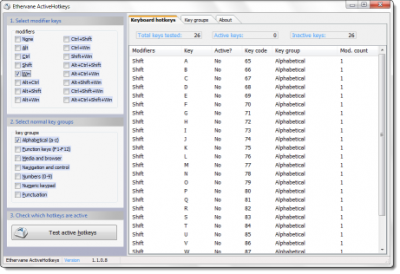
If the keys are swapped, Alt must be pressed first (use one at a time): For example: Press AppsKey and Alt in any order, then slash (/). Combinations which your keyboard hardware supports can usually be detected by using #If and GetKeyState, but the results may be inconsistent.

For example, <+s:: is recommended over LShift & s.Ĭombinations of three or more keys are not supported. For example, 1 & 2:: will activate even if Ctrl or Alt is held down when 1 and 2 are pressed, whereas ^1:: would be activated only by Ctrl+1 and not Ctrl+Alt+1.įor standard modifier keys, normal hotkeys typically work as well or better than "custom" combinations. Modifiers: Unlike a normal hotkey, custom combinations act as though they have the wildcard (*) modifier by default. This behaviour can be avoided by applying the tilde prefix to either hotkey. See comment below.įire on release: The presence of one of the above custom combination hotkeys causes the release of Numpad0 to perform the indicated action, but only if you did not press any other keys while Numpad0 was being held down. Send Sincerely, Make the release of Numpad0 produce a Numpad0 keystroke. The following example uses ^!s to indicate Control+Alt+S: ^!s:: To use more than one modifier with a hotkey, list them consecutively (the order does not matter). In other words, the return is implicit: #n::Run Notepad However, if a hotkey needs to execute only a single line, that line can be listed to the right of the double-colon. In the final line above, return serves to finish the hotkey. The pound sign stands for the Windows key, which is known as a modifier: #n::

In the following example, the hotkey Win+N is configured to launch Notepad. Hotkeys are sometimes referred to as shortcut keys because of their ability to easily trigger an action (such as launching a program or keyboard macro).


 0 kommentar(er)
0 kommentar(er)
